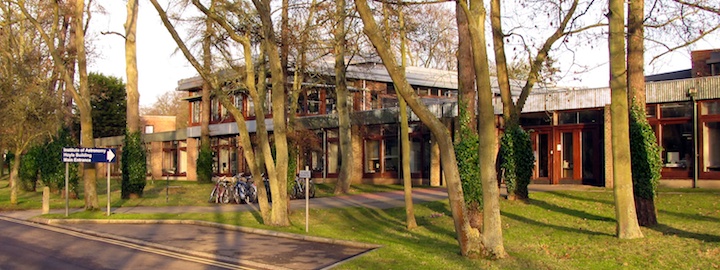The IoA is part of the Faculty of Physics and Chemistry within the School of the Physical Sciences of The University of Cambridge.
The Institute of Astronomy (IoA) came into being in 1972 by the amalgamation of three institutions which had developed on the site. These were the Cambridge University Observatory which was established in 1823, the Solar Physics Observatory (1912) and the Institute of Theoretical Astronomy (1967).
The IoA is a department of the University of Cambridge and is engaged in teaching and research in the fields of theoretical and observational Astronomy. A wide class of theoretical and observational problems are studied, ranging from the study and observations of extrasolar planets to supermassive black holes and quasars and of the evolution of the whole Universe, through theories and observations of the formation and evolution of galaxies and stars, X-ray sources and black holes.
Much observational work centres around the use by staff of large telescopes abroad and in space to study quasars, galaxies and the chemical constitution of stars. Instrumentation development is also an important area of activity, involving charge coupled devices and detector arrays for rapid recording of very faint light and the design and construction of novel spectrographs.
The Institute comprises about 90 postdoctoral research staff (including academic staff and senior reseaech fellows), 45 graduate students and 25 professional services support staff. There are close links with the Cavendish Astrophysics Group (formerly the Mullard Radio Astronomy Observatory) as well as with the Department of Applied Mathematics and Theoretical Physics, all of which are conducting complementary research programmes here in Cambridge

